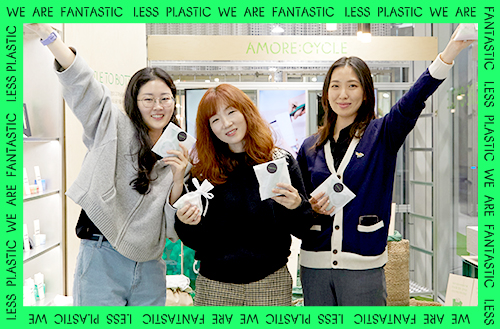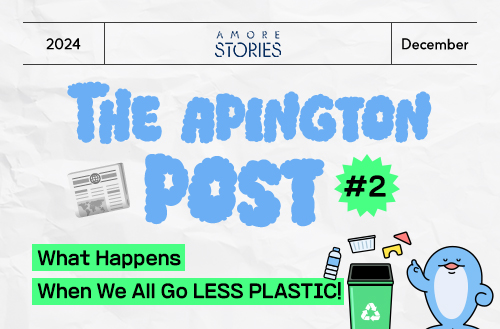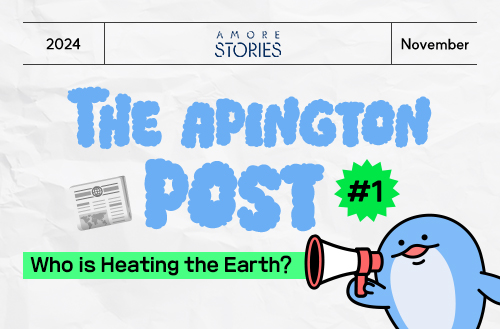

-
-
- 메일 공유
-
https://stories.amorepacific.com/en/from-a-plastic-villain-to-a-conscious-consumer-how-sulwhasoo-touched-my-heart
From a Plastic Villain to a Conscious Consumer: How Sulwhasoo Touched My Heart

Captain America, with his rugged appearance and bulging muscles, is the leading superhero of the Avengers. Before Captain America, however, ‘captain’ for me had always been ‘Captain Planet.’ Captain Planet, featured in the TV cartoon ‘Captain Planet and the Planeteers,’ was a superhero who fought against environmental villains who ‘enjoyed pollution and destruction.’ When I was in elementary school, I used to sing along with the theme song and thought, ‘The elements that make up our planet are Earth, Fire, Wind, Water, and Heart.’ But now, as an adult, my view has changed somewhat: The essential elements that make up the Earth are ‘plastic, plastic, plastic, plastic, and plastic.’
Part 1
The Unbearable Plastic-Ness of Being
The sunlight streams in through the plastic blinds. For a while, I continue to lie down with my head resting on the pillow filled with plastic stuffing. I check my plastic clock then jump out of the bed. I open the plastic door of the refrigerator, take out a plastic water bottle, and drink some water. I sit on the plastic toilet holding my plastic toothbrush, attempting to get two things done simultaneously. The toothbrush goes into the plastic sterilizer, and the used toilet paper goes into the plastic trash bin. I put on plastic clothes over my plastic underwear. I pack stir-fried rice lunch in a plastic lunchbox, and just in case the soup leaks, I put the plastic lunchbox in a plastic bag. I place the plastic bag in a bag made of plastic material, grab my smartphone that wears a plastic case, put in my plastic earphones, and grab my plastic credit cards.
- Excerpt from ‘Let’s Joke About Science’
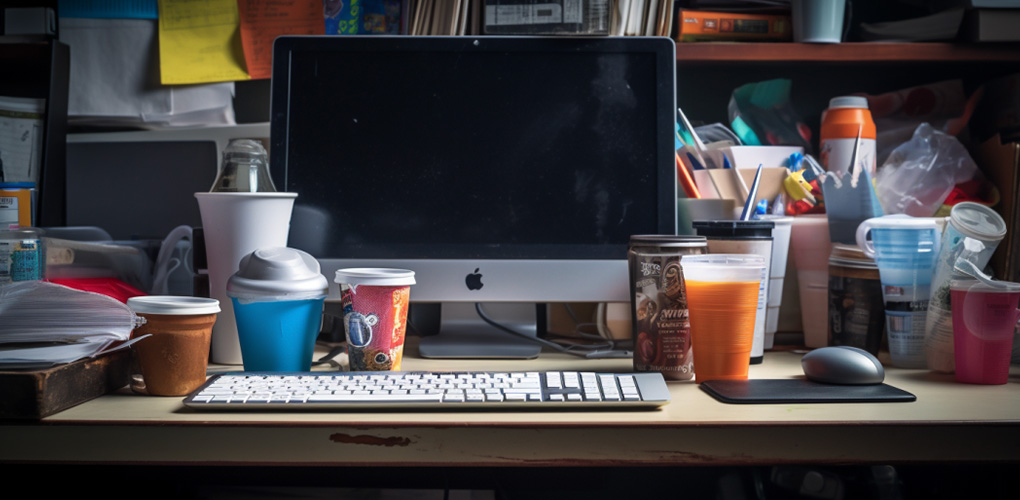
It's the age of plastic. From the moment we wake up in the morning until we go to sleep, we live within the realm of plastic. Just as we don't consciously notice the telephone poles standing along the road, plastic has become such an everyday part of our lives that we often don't notice it.
Plastic is easier to produce than any other material. It's long-lasting and can even find its way into our bodies. When plastic was commercialized in the 1970s, it was hailed as the “miracle material” precisely because of this convenience. However, over 50 years later, these remarkable benefits of plastic have become the starting point of our impending doom. Its convenience has led to its overuse and its permanence is causing the Earth to decay.
With so many people talking about the seriousness of plastic pollution, I decided to look up some data from Greenpeace, and I found that the average disposable plastic consumption per person in South Korea is 568 items per year, which means that a staggering 5,600,000,000 items are discarded each year in South Korea alone. In South Korea, the number of 500 ml plastic water bottles used annually can wrap around the Earth 14 times, and the combined height of the plastic cups used annually is 1.5 times the distance from Earth to the Moon. The fact that all of this happens within just one year is truly shocking. Seeing these mind-boggling numbers, I thought, “Oh, that's really astonishing. Scientists must be very busy.” Yes, even as someone who is a part of this plastic world, that's just about as serious as my reaction gets after seeing these numbers: “Science will solve everything.”
Obviously though, scientists cannot solve everything. I mean, just look at the plastic-frame glasses of scientists who are trying to alert us about the dangers of plastic. In the 21st century, no one on Earth can be the “No Plastic Man.” Fortunately, however, everyone can be aware of the dangers of plastic. Lucky for us, there are people who are smart and quick-on-their-feet all around the world. My job? Well, it's to support their efforts and be a free rider.
In the world we live in now, there is a name tag we use to distinguish good brands: ESG. The first acronym E, which stands for ‘Environmental,’ is seen as a global challenge that transcends national borders. It involves providing reusable straws instead of plastic ones, displaying label-less bottled water, and developing paper ice packs. Companies have adopted various measures to reduce plastic, but to be honest, I find some of these efforts still unrelatable. If using a product makes you feel more inconvenient or less ‘cool’ than before, then it's not a good product experience. It was amidst this dilemma that I came across the rebranded Sulwhasoo.
Part 2
An Entirely New and Comfortable Experience
My first experience with Sulwhasoo was thanks to my younger sibling. She got a job at a department store cosmetics sector and gifted the entire family with a set of Sulwhasoo products. “Sulwhasoo? Sounds like a new brand of fruit liqueur...” I was quite ignorant about cosmetics at the time. I was then told that these products were rather high-quality and, thus intrigued, I remember using the cream faithfully three times a day.
Then recently, I visited a department store to buy some Korean Thanksgiving gifts. Wandering around the store unable to find something I liked, I stumbled upon an eye-catching booth. It was a Sulwhasoo store with impressive white porcelain jars and plum blossom decorations. It wasn't the Sulwhasoo of old, with the brand name engraved in bold Chinese characters. “Is the Sulwhasoo with Blackpink’s Rosé as the ambassador the same Sulwhasoo that was once represented by the Chinese characters?” I asked. The employee, confused and rightfully so, responded with a “Huh?” I felt somewhat embarrassed and pretended awkwardly to be minding my own business.

I noticed that the entire space had a subtle matte texture in off-white shades with amber as the accent color. I was curious about the reason behind this well-thought-out presentation and asked the staff member. The employee spoke about the motif of the space like a well-prepared expert. She mentioned that the brand wanted to capture vitality with the understated elegance of “white porcelain” and the color of nature's “earth.” The strategy was to make people feel comfortable by representing the brand's unique heritage with an intuitive and simple texture. If this was just branding that focused on how it looked outside, it would have appeared as if it was lacking substance. “The packaging seems to have changed a bit as well.” Catching on to my comment, the staff continued to explain as if she had been waiting to bring it up.
Returning to Earth
Sulwhasoo is making efforts to reduce its carbon footprint and increase product circularity through carbon-neutral production and sustainable packaging. The brand is particularly conscious of the negative impact of plastic and places importance on reducing its usage and recycling, hoping to prevent the procession of plastic waste from Earth to the Moon.
What caught my attention in this process was that it wasn't just about changing the packaging, but also about incorporating the brand's philosophy into it. Here, the brand's inspirational source, ‘the earth,’ makes a reappearance. Sulwhasoo uses sustainable materials like ceramics and plaster to decorate the space, and replaces materials like single-use plastic with sustainable options like paper or recyclable glass allowing these items to return to the environment. This shows a deep sense of respect and responsibility towards the earth, which was the origin and inspiration for the Sulwhasoo brand.
From a corporate perspective, there is probably nothing like plastic that can dramatically cut costs. Moreover, replacing all existing products and insisting on using only alternatives would undoubtedly pass the costs onto consumers. To address these issues, Sulwhasoo came up with a method where they don't produce additional plastic. They designed the existing product containers to be so attractive that people would think twice before disposing of them, and introduced “refill products” to encourage their reuse. The Sulwhasoo Ultimate S series, for example, were designed as refillable products to enhance their reusability. In addition, the brand took steps like eliminating unnecessary plastic decorations and using recyclable plastic caps for the FCAS Essence to create a more sustainable future. What I found particularly impressive was the fact that they reduced the weight of the container by using glass instead of plastic, which helped minimize the product's environmental impact.
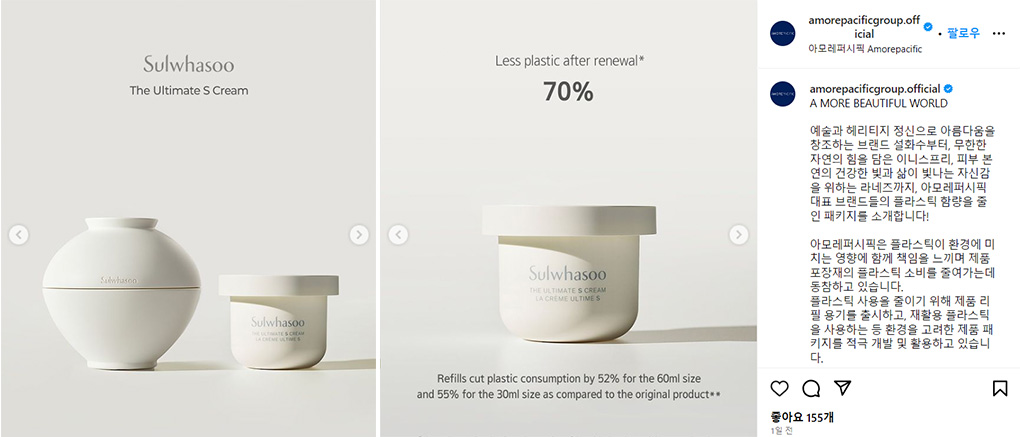
Amorepacificgroup instagram(@amorepacificgroup.official)
Long story short, I couldn't resist buying my first paid-for-it-myself Sulwhasoo sets. The set's new packaging no longer has any of the plastic cushioning and structure. I admit It was expensive, but how could I say no after hearing such a passionate, engaging explanation about a brand and its products? The staff member wrapped the gift in a “jihambo,” the easily recyclable wrapping cloth the name of which translates to ‘wrapping cloth that carries the wisdom and sincerity of tradition.’ The elegant design, finished with a Korean-style knot, made the gift look like a piece of art. ‘Now, that's how a gift should be presented,’ I thought to myself. Sulwhasoo managed to destroy the misconception I had about eco-friendly products, about how they are all great but lack style. It made me rethink the importance of aesthetics. Many consumers will choose looks over significance, and Sulwhasoo decided to show rather than tell, in other words, to offer the experience, rather than explain itself.

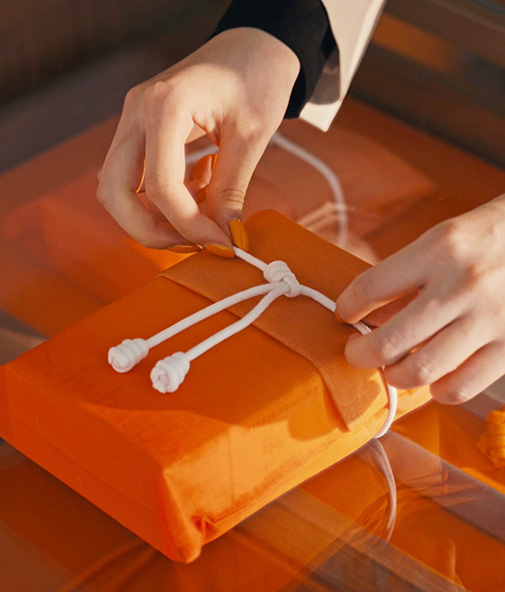
Dear Brands, Please Make Great Products
These days, I find myself pondering a great deal of things. I'm diligent in separating recyclables, and I even pick up litter from the streets from time to time. However, when I look at how my sink piles up with so many plastic delivery containers, I can't help but wonder if “the villain who enjoys pollution and destruction” is none other than myself. As an individual, small efforts are necessary, but as a consumer, it's crucial to monitor companies through wise consumption. I cannot wait to see how Sulwhasoo will continue to incorporate brand-philosophy-based ESG into its products and services as a premium brand. I cannot wait to see more brands like Sulwhasoo. Delivering the right message consistently is great, but creating products that people can't resist buying is equally as important. That's how brands make consumers open their wallets.
Written by Kim Gun-Tae
Photo Courtesy Amorepacific
Overall Design Amorepacific Communications Team
Making a more beautiful world.
It’s the purpose behind everything we do at Amorepacific.
It’s why in 1993 we dedicated ourselves to taking full responsibility for the impact of our products.
Rather than celebrating accomplishments, we focus on what needs to be done next.
Always asking: “how can we create new beauty that benefits the world”?
We start with deep empathy for our customers, society, and the natural world all around us.
Creating the ties that bind and working together to create a more beautiful world.
In that spirt,
Amorepacific will change how plastic products are made, bought, used and discarded.
We will:
Use Less.
Recycle More.
Maximize plastic lifespans.
It’s our responsibility, and our commitment.
To you.
To ourselves.
To the planet.
Let’s think again about how we use plastics in our everyday lives.
By joining hands, the world becomes even more fantastic.
So let's reduce plastic for a more beautiful world.
Less Plastic. We are Fantastic!
-
Like
6 -
Recommend
2 -
Thumbs up
0 -
Supporting
2 -
Want follow-up article
0



